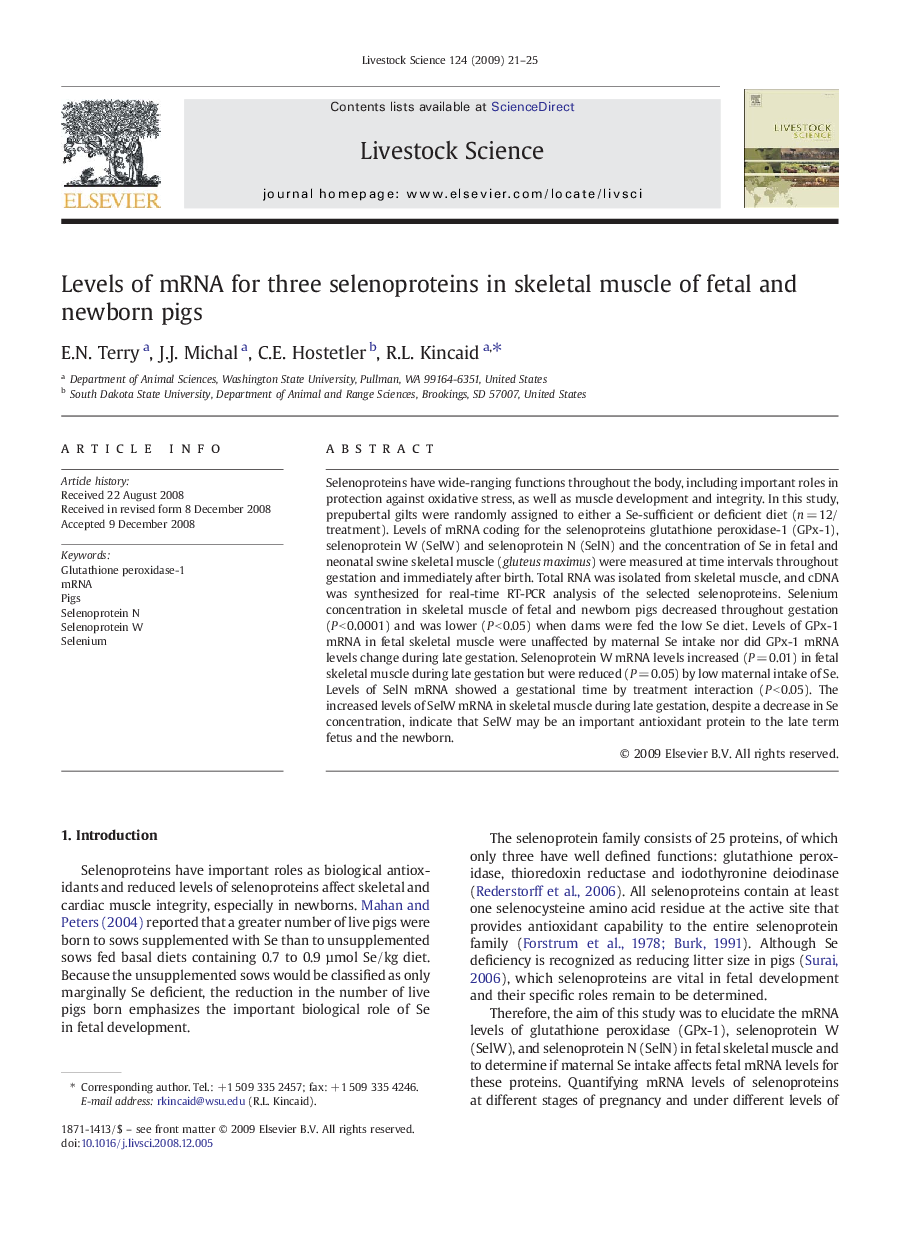| Article ID | Journal | Published Year | Pages | File Type |
|---|---|---|---|---|
| 2448036 | Livestock Science | 2009 | 5 Pages |
Selenoproteins have wide-ranging functions throughout the body, including important roles in protection against oxidative stress, as well as muscle development and integrity. In this study, prepubertal gilts were randomly assigned to either a Se-sufficient or deficient diet (n = 12/treatment). Levels of mRNA coding for the selenoproteins glutathione peroxidase-1 (GPx-1), selenoprotein W (SelW) and selenoprotein N (SelN) and the concentration of Se in fetal and neonatal swine skeletal muscle (gluteus maximus) were measured at time intervals throughout gestation and immediately after birth. Total RNA was isolated from skeletal muscle, and cDNA was synthesized for real-time RT-PCR analysis of the selected selenoproteins. Selenium concentration in skeletal muscle of fetal and newborn pigs decreased throughout gestation (P < 0.0001) and was lower (P < 0.05) when dams were fed the low Se diet. Levels of GPx-1 mRNA in fetal skeletal muscle were unaffected by maternal Se intake nor did GPx-1 mRNA levels change during late gestation. Selenoprotein W mRNA levels increased (P = 0.01) in fetal skeletal muscle during late gestation but were reduced (P = 0.05) by low maternal intake of Se. Levels of SelN mRNA showed a gestational time by treatment interaction (P < 0.05). The increased levels of SelW mRNA in skeletal muscle during late gestation, despite a decrease in Se concentration, indicate that SelW may be an important antioxidant protein to the late term fetus and the newborn.
